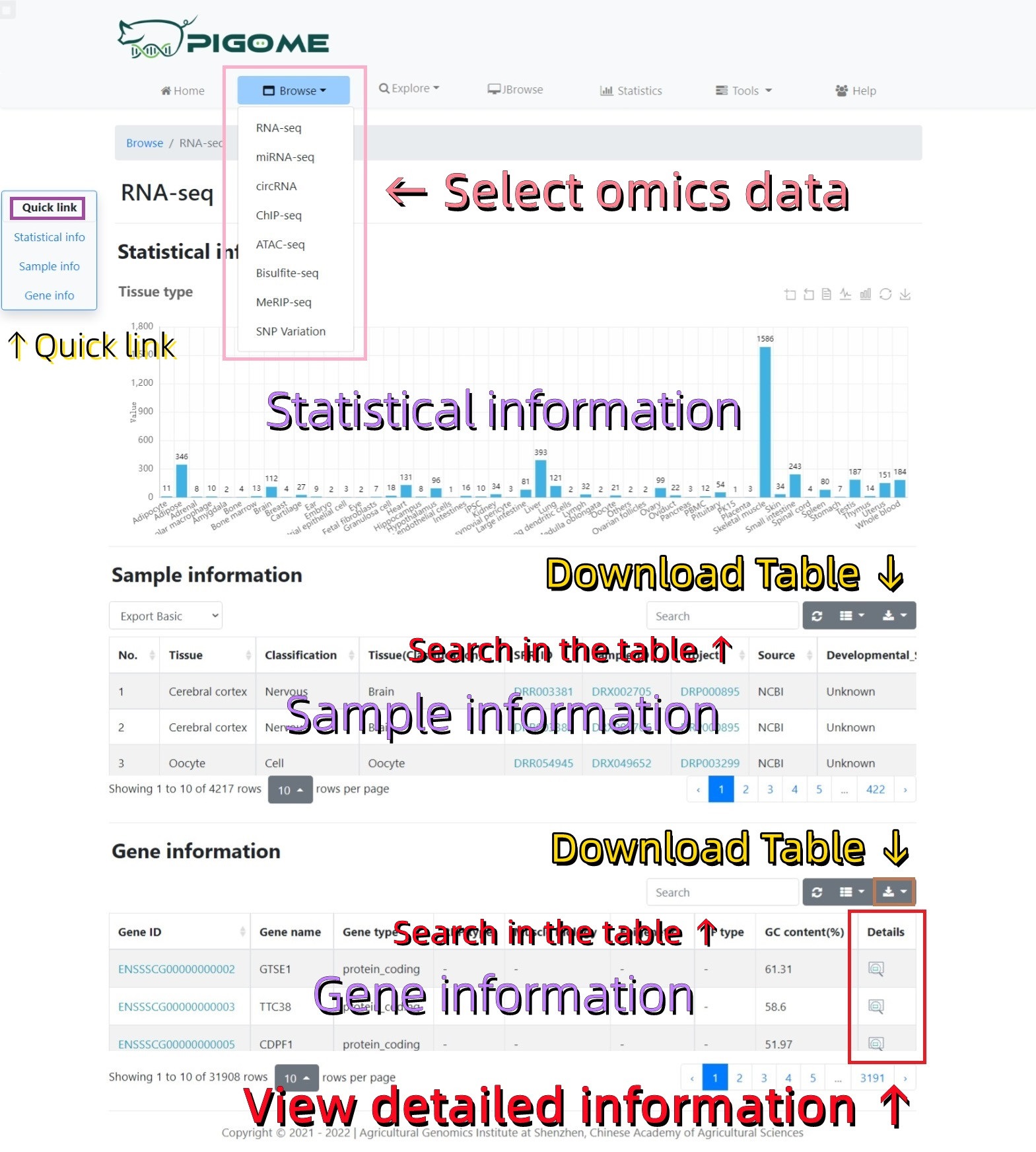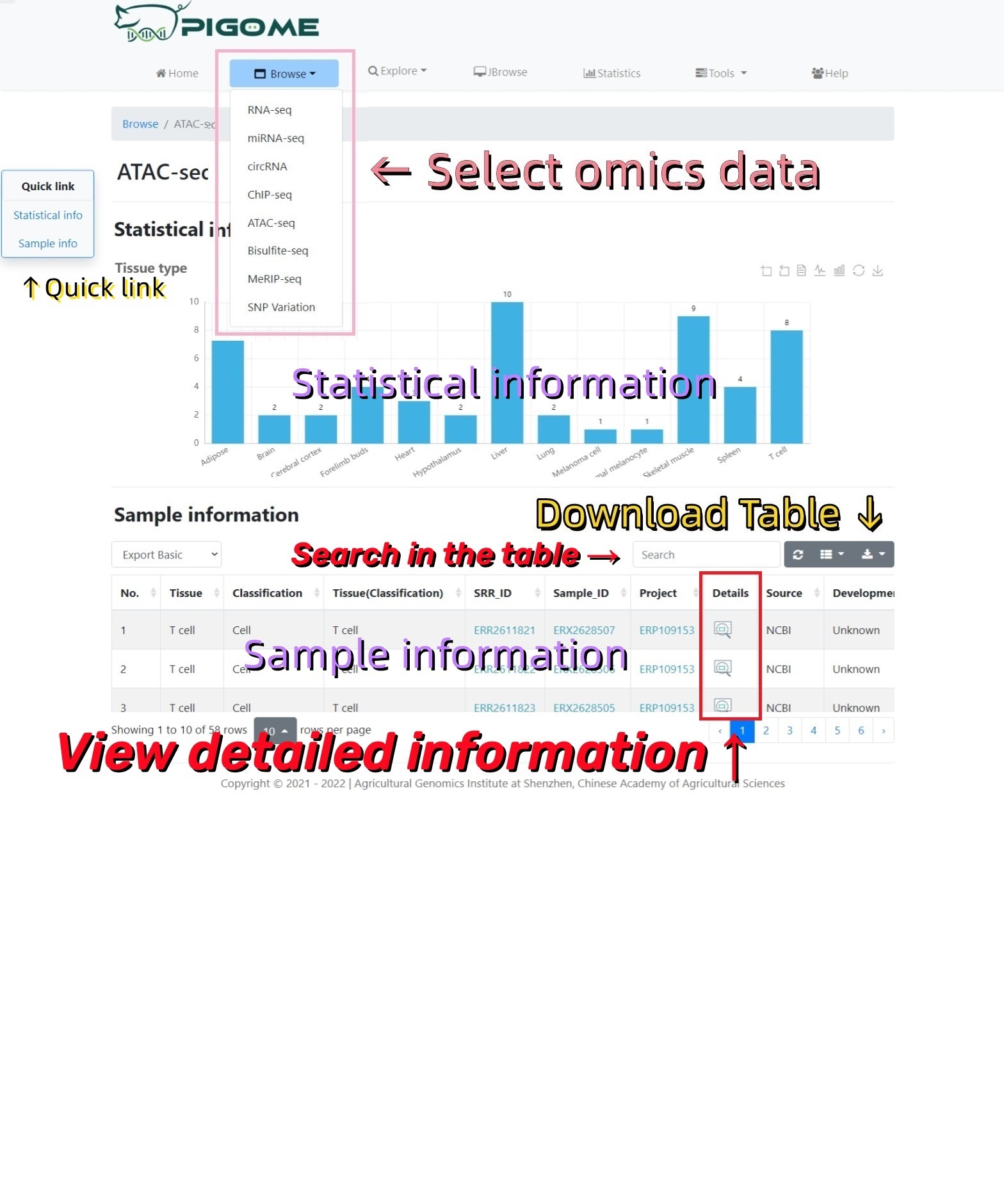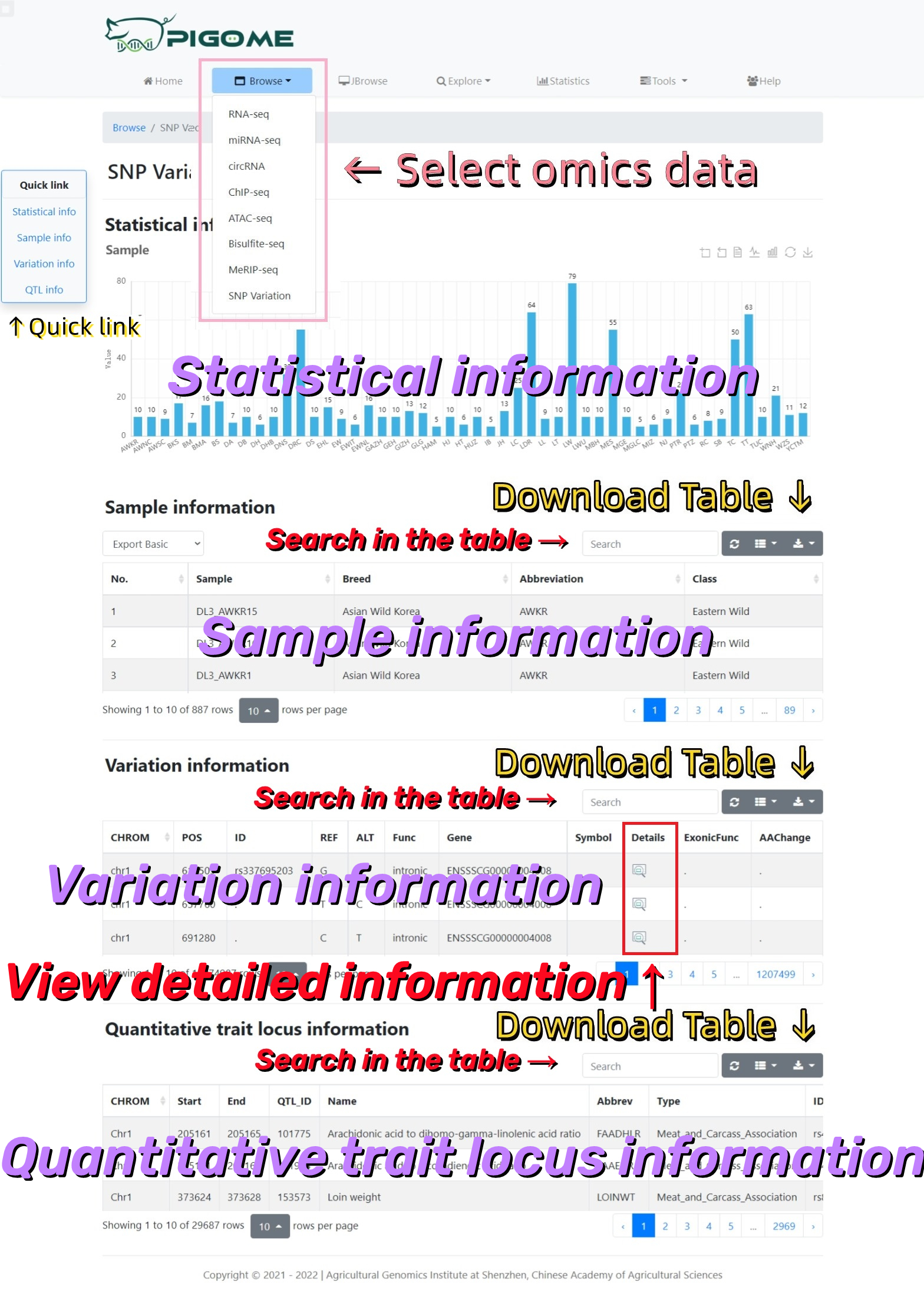1. Overview of PIGOME
The PIGOME database is a user-friendly web application. PIGOME can be used for multi-omics data storage and interactive analysis. Furthermore, PIGOME can explore the independent and interrelated characteristics of a large number of sequencing samples from different varieties, tissues, and developmental stages. Therefore, PIGOME will become an important resource for experimenters and bioinformatics analysts to explore pig multi-genomics data, which will promote the research and development of pig functional genomics.
2. Definition of tissue classification
| Classification | Tissue(Classification) |
|---|---|
| Blood & Immune | Lymph |
| Blood & Immune | Whole blood |
| Blood & Immune | Thymus |
| Blood & Immune | Bone marrow |
| Cell | Oocyte |
| Cell | Alveolar macrophage |
| Cell | PBMC |
| Cell | Lung dendritic cells |
| Cell | IPSC |
| Cell | Fetal fibroblasts |
| Cell | Granulosa cell |
| Cell | Knee synovial pericyte |
| Cell | Endometrial epithelial cell |
| Cell | Adipocyte |
| Cell | PK15 |
| Cell | Iliac endothelial cells |
| Cell | Sperm cells |
| Cell | Mechanocyte |
| Cell | Macrophage |
| Cell | Cell |
| Cell | Inner cell mass |
| Cell | PEF |
| Cell | T cell |
| Cell | Melanoma cell |
| Cell | Normal melanocyte |
| Cell | IPEC-J2 |
| Internal | Adipose |
| Internal | Kidney |
| Internal | Liver |
| Internal | Lung |
| Internal | Spleen |
| Internal | Large intestine |
| Internal | Small intestine |
| Internal | Intestines |
| Internal | Stomach |
| Internal | Newborn Trachea |
| Internal | Esophagus |
| Muscomuscle | Skeletal muscle |
| Muscomuscle | Heart |
| Muscomuscle | Cartilage |
| Muscomuscle | Bone |
| Muscomuscle | Ear |
| Nervous | Brain |
| Nervous | Hippocampus |
| Nervous | Hypothalamus |
| Nervous | Amygdala |
| Nervous | Medulla oblongata |
| Nervous | Spinal cord |
| Nervous | Eye |
| Nervous | Frontal lope |
| Nervous | Cortex |
| Nervous | Cerebral cortex |
| Others | Others |
| Others | Embryo |
| Others | Forelimb buds |
| Others | Corpus luteum |
| Reproductive | Testis |
| Reproductive | Uterus |
| Reproductive | Placenta |
| Reproductive | Ovary |
| Reproductive | Oviduct |
| Reproductive | Ovarian follicles |
| Reproductive | Sperm |
| Secretory | Pituitary |
| Secretory | Adrenal |
| Secretory | Breast |
| Secretory | Skin |
| Secretory | Pancreas |
| Unknown | Unknown |
3. Overview of the Home page
1. Main navigation of the database.
2. A simple introduction about the database.
3. The statistics of the data in database.
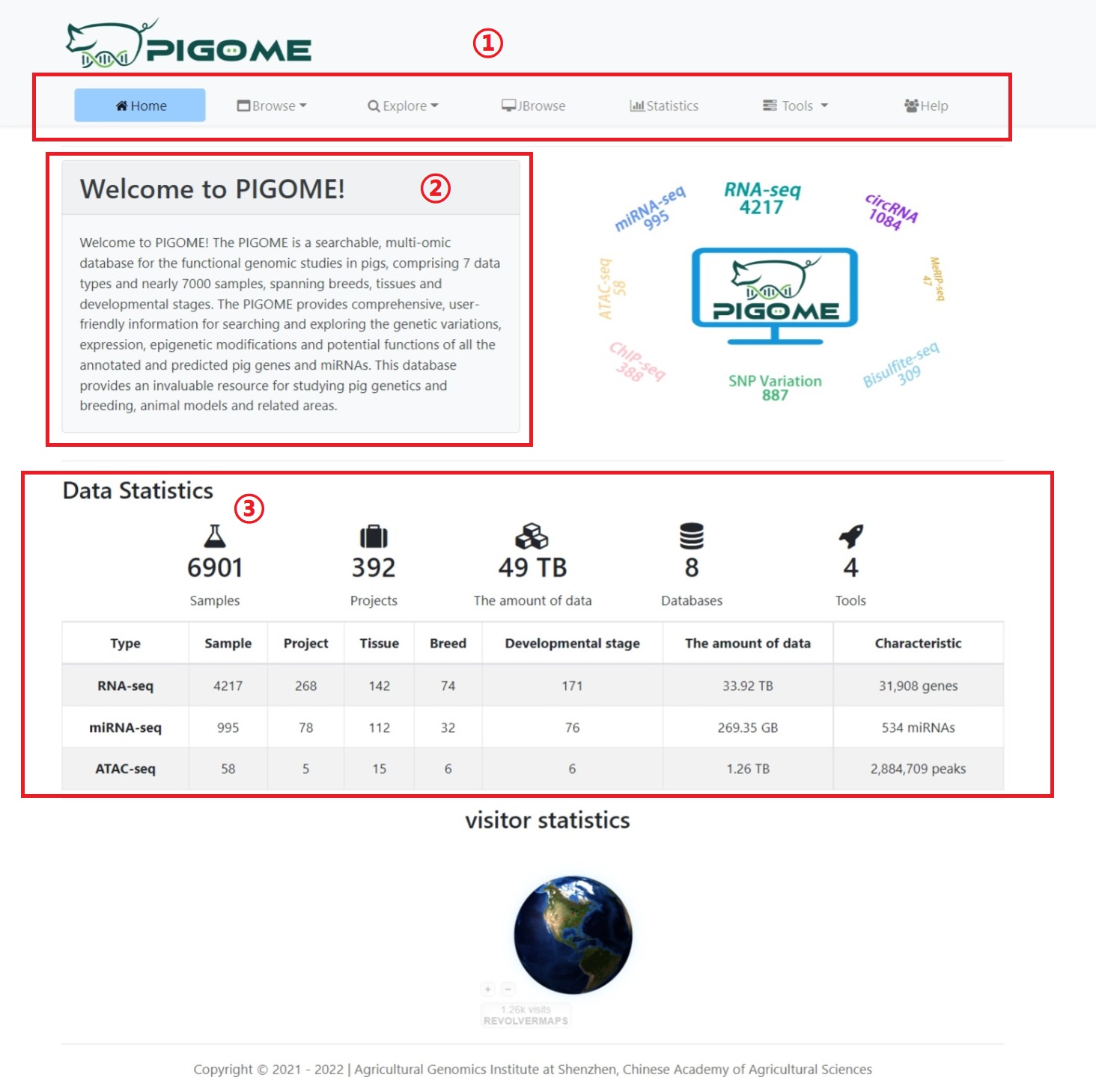
4. Overview from the Browse page
The browse page mainly consists of seven parts:
(1) Statistical information.
(2) Sample information.
(3) Gene information.
(4) Annotation information.
(5) Variation information.
(6) Quantitative trait locus information.
(7) Alternative Splicing information.
5. Overview from the JBrowse page
1. Search for the tracks in the database.
2. Select the tracks display in the database.
3. Enter gene location or symbol to view.
4. Zoom in or zoom out on the gene region.
5. Gene display area.
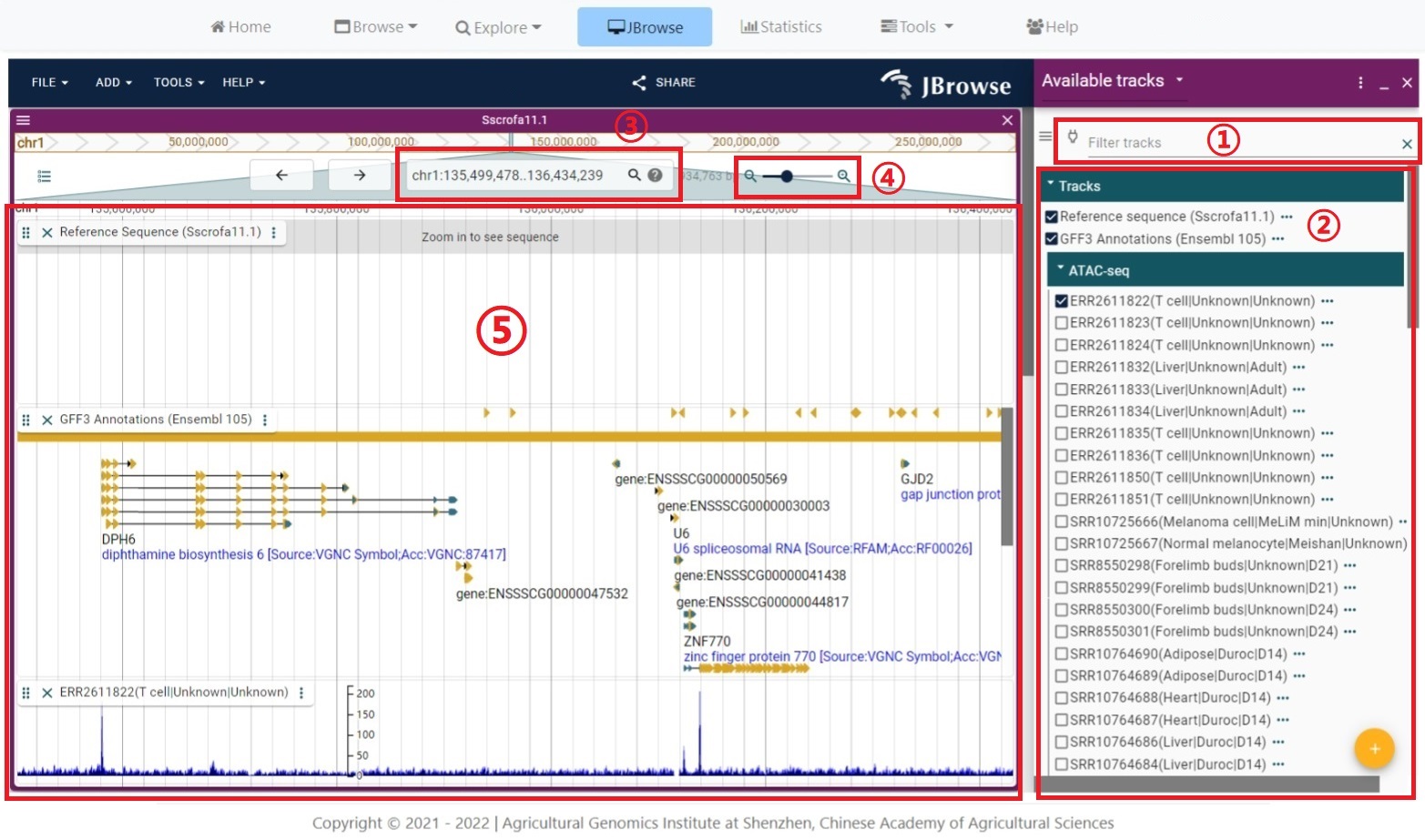
6. Use the Explore page to enter and select keywords
Three ways were provided to explore the multi-omics information in detail.
6.1 Users can explore interesting relevant multi-omics information by inputting gene ID or symbol.

6.2 Users can explore interesting relevant multi-omics information by range.
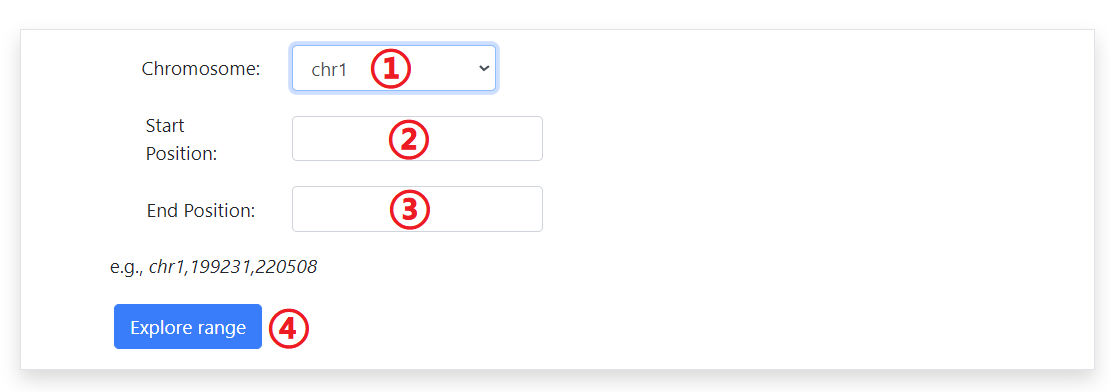
6.3 Users can explore interesting relevant multi-omics information by sample.
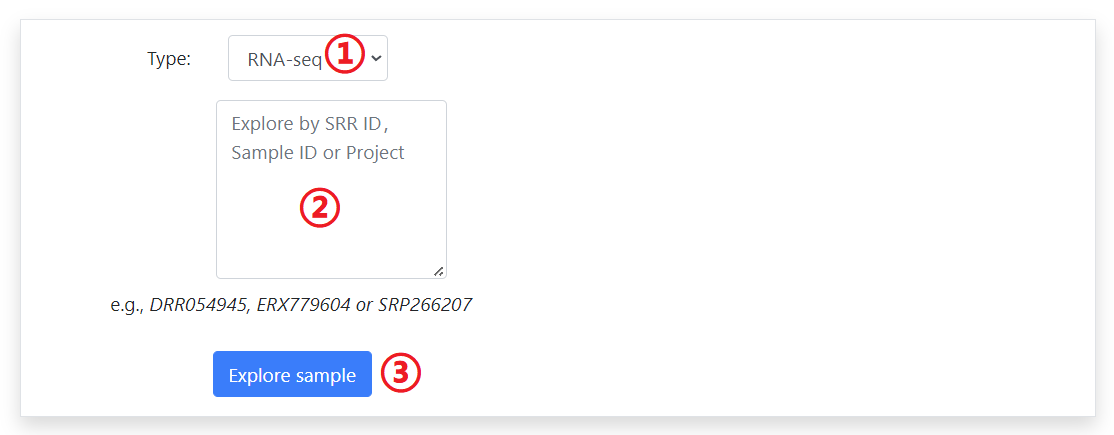
7. Result and Detail
7.1 The details page display of RNA-seq, miRNA-seq and circRNA.
① Basic information.② Annotation information.
③ Statistical information by tissue.
④ Statistical information by breed type.
⑤ Statistical information by developmental stage.
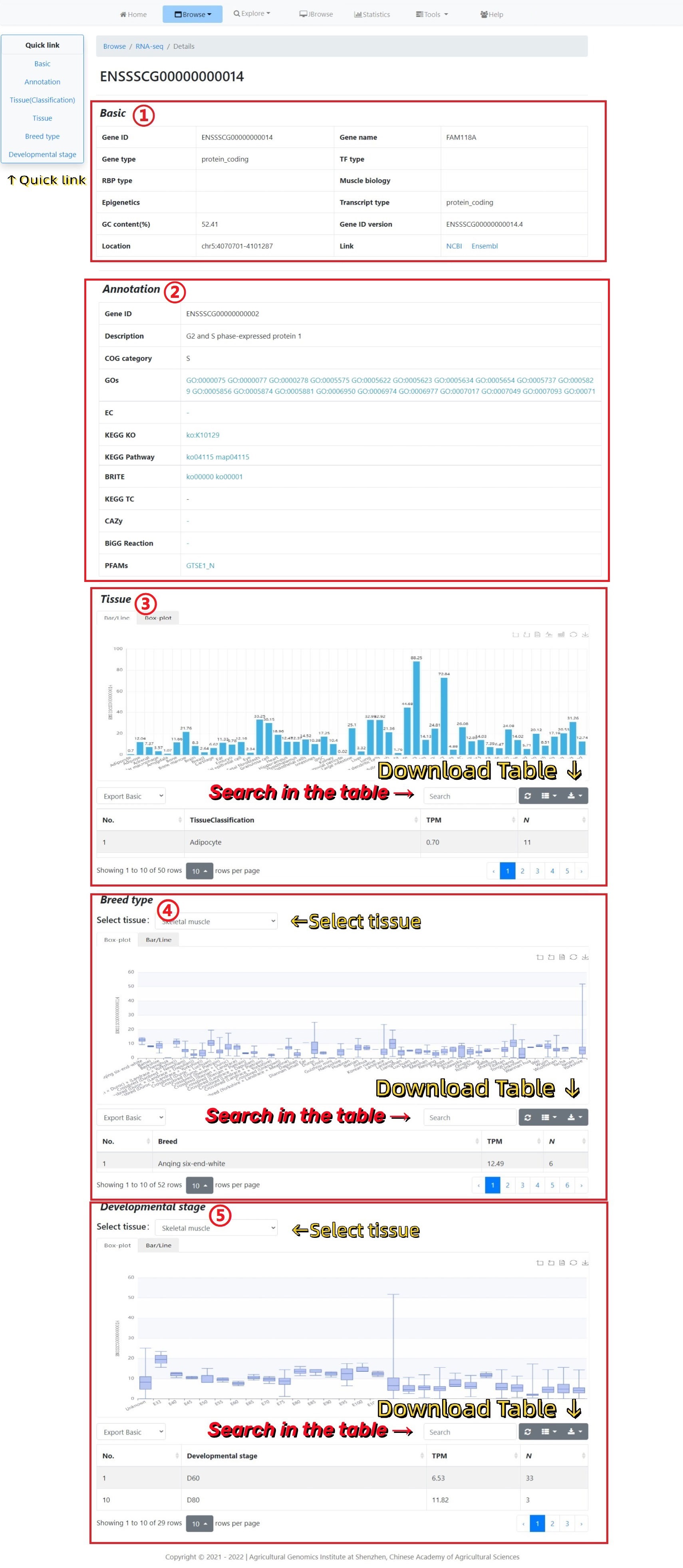
7.2 The details page display of ChIP-seq, ATAC-seq, Bisulfite-seq and MeRIP-seq.
① Basic information.② Genome visualization.
③ Related peak/CpG information.
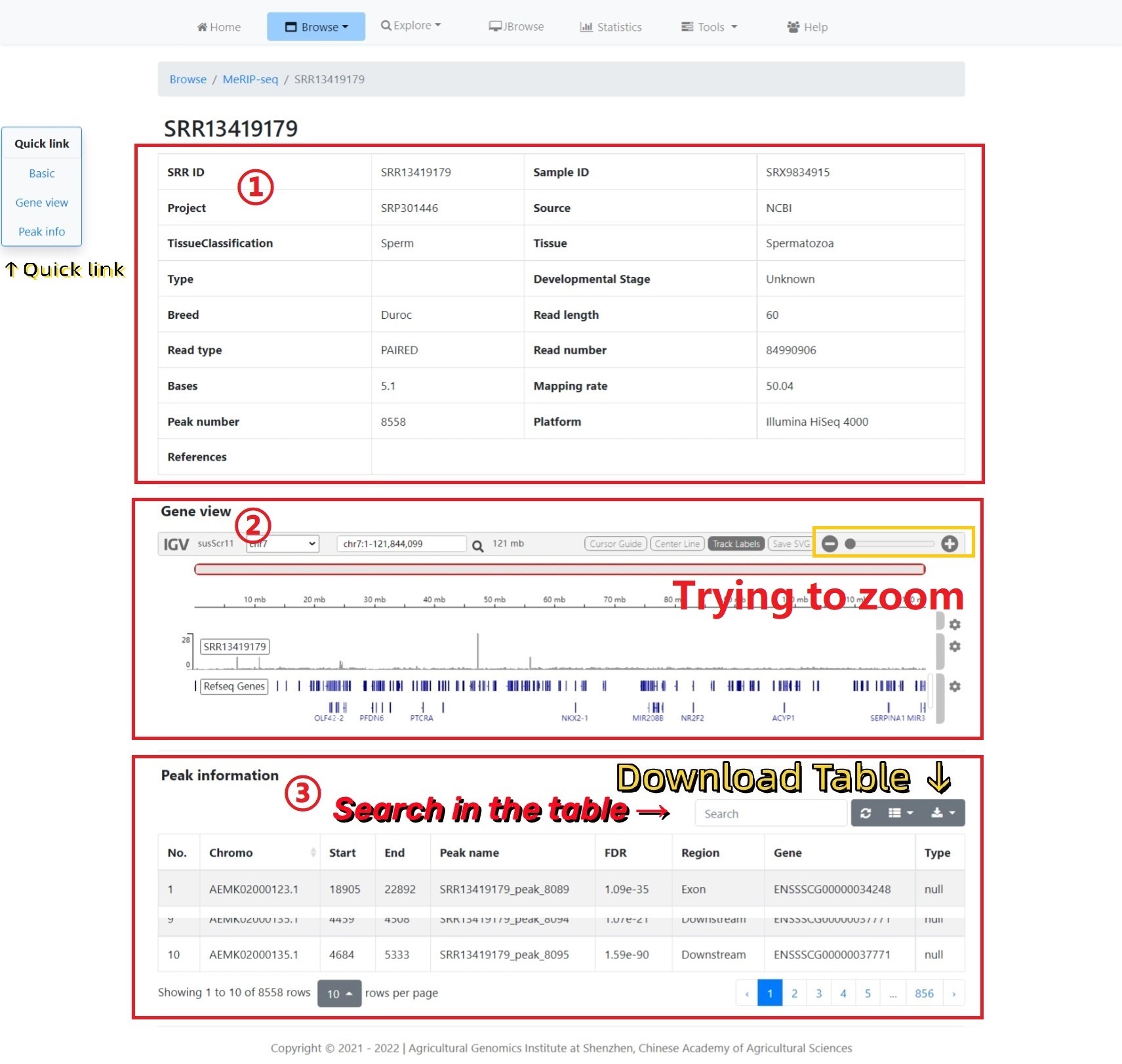
7.3 The details page display of SNP Variation and InDel.
① Basic information.② Statistical information by breed.
③ Related quantitative trait locus information.
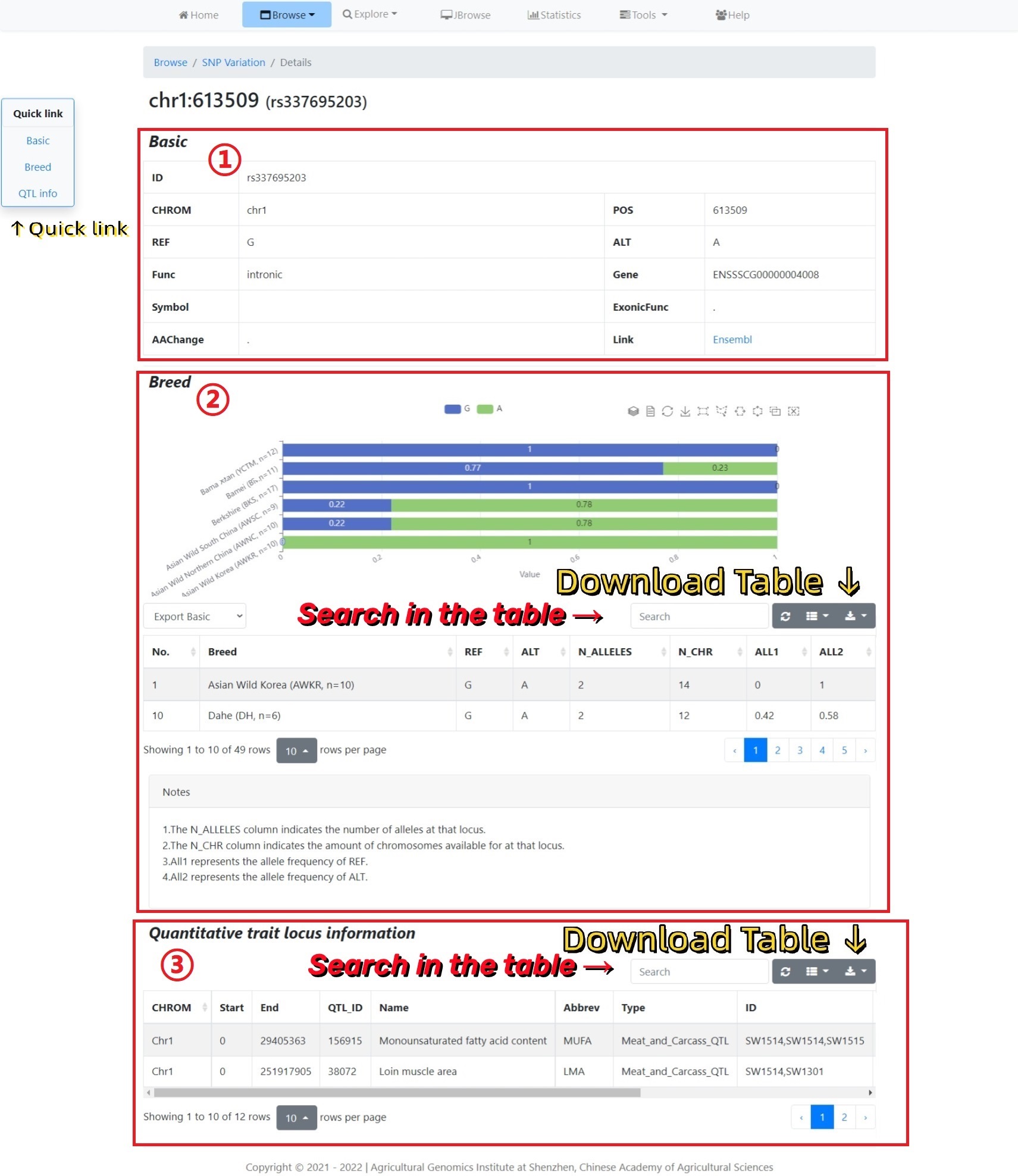
7.4 The details page display of Alternative Splicing.
① Basic information.② PSI value information by skeletal muscle development group.
③ PSI value information by each sample.

7.5 The results page of exploring by gene ID, symbol or range.
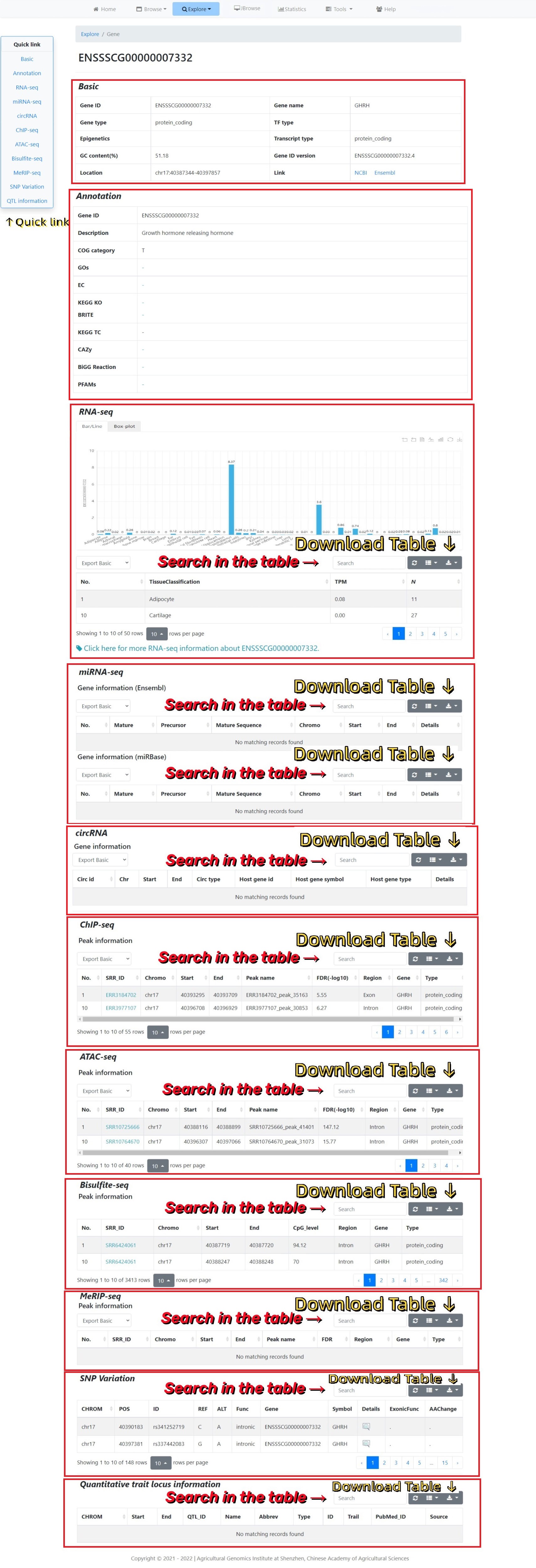
7.6 The results page of exploring by sample.
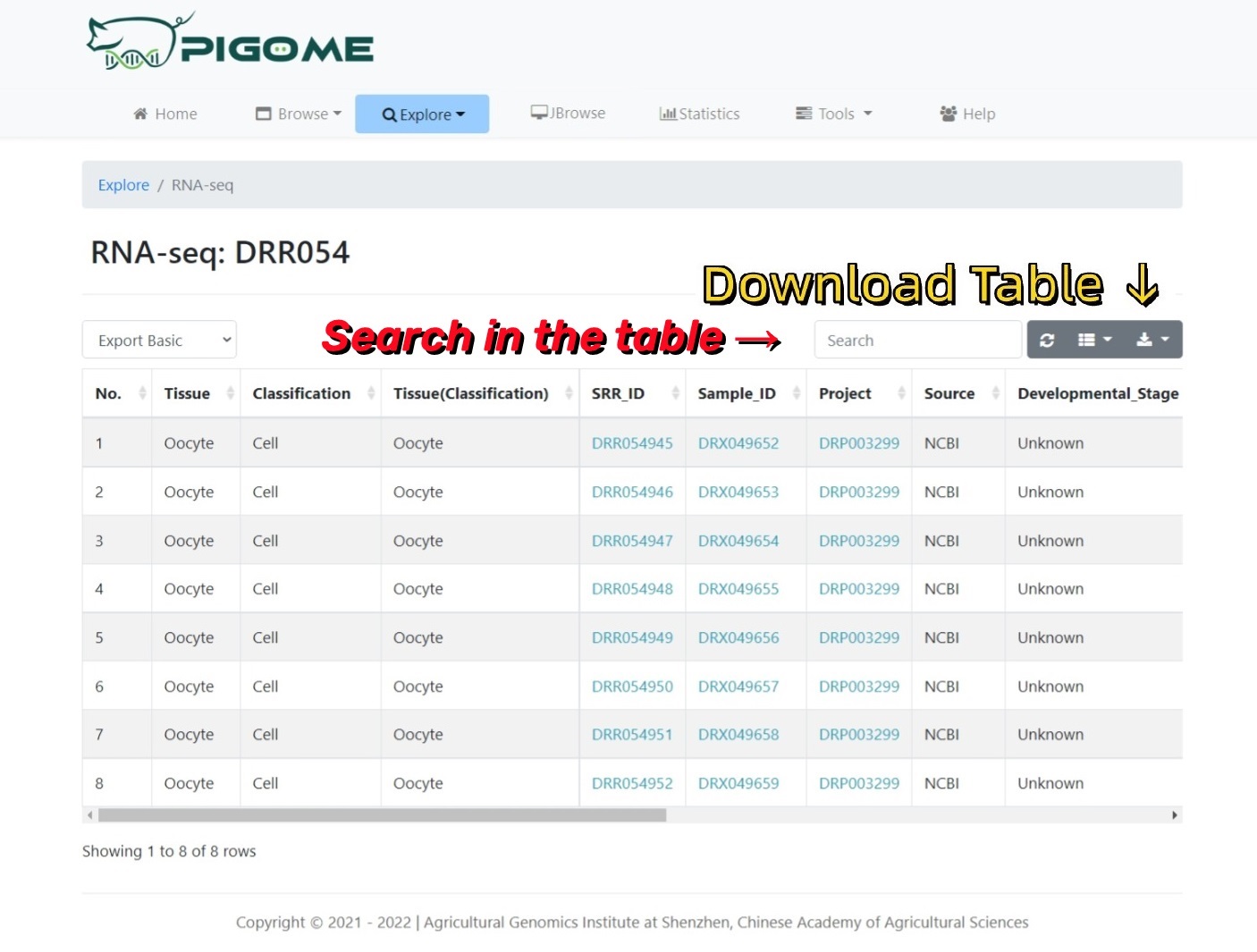
8. Contact us
For any question or suggestion, please contact:
Zhonglin Tang Email: tangzhonglin@caas.cn
Yalan Yang Email: yangyalan@caas.cn
